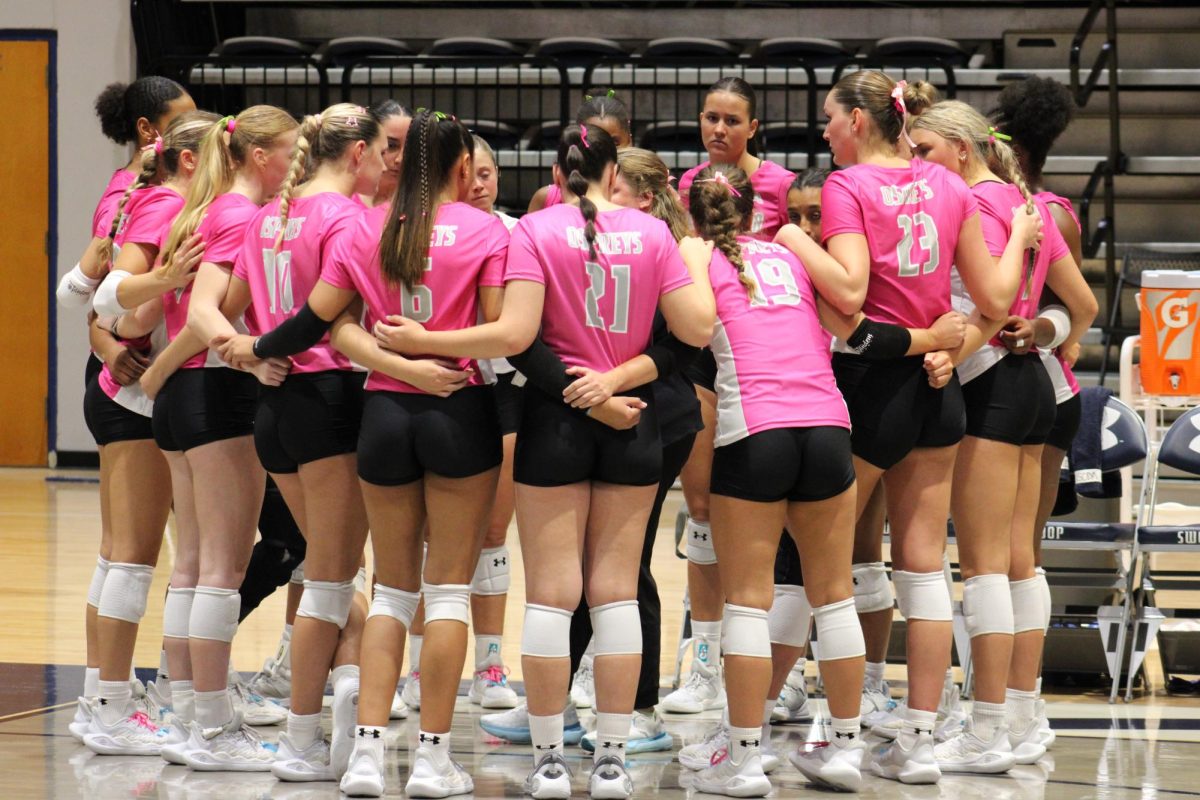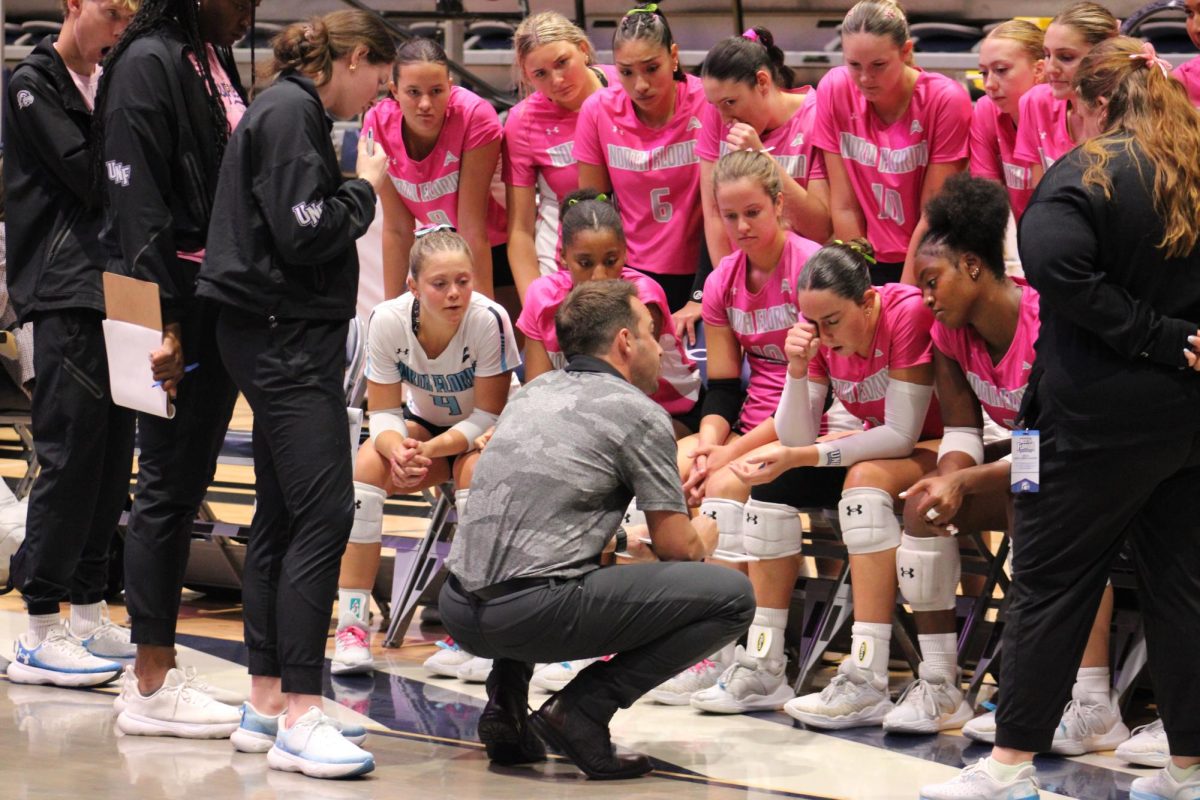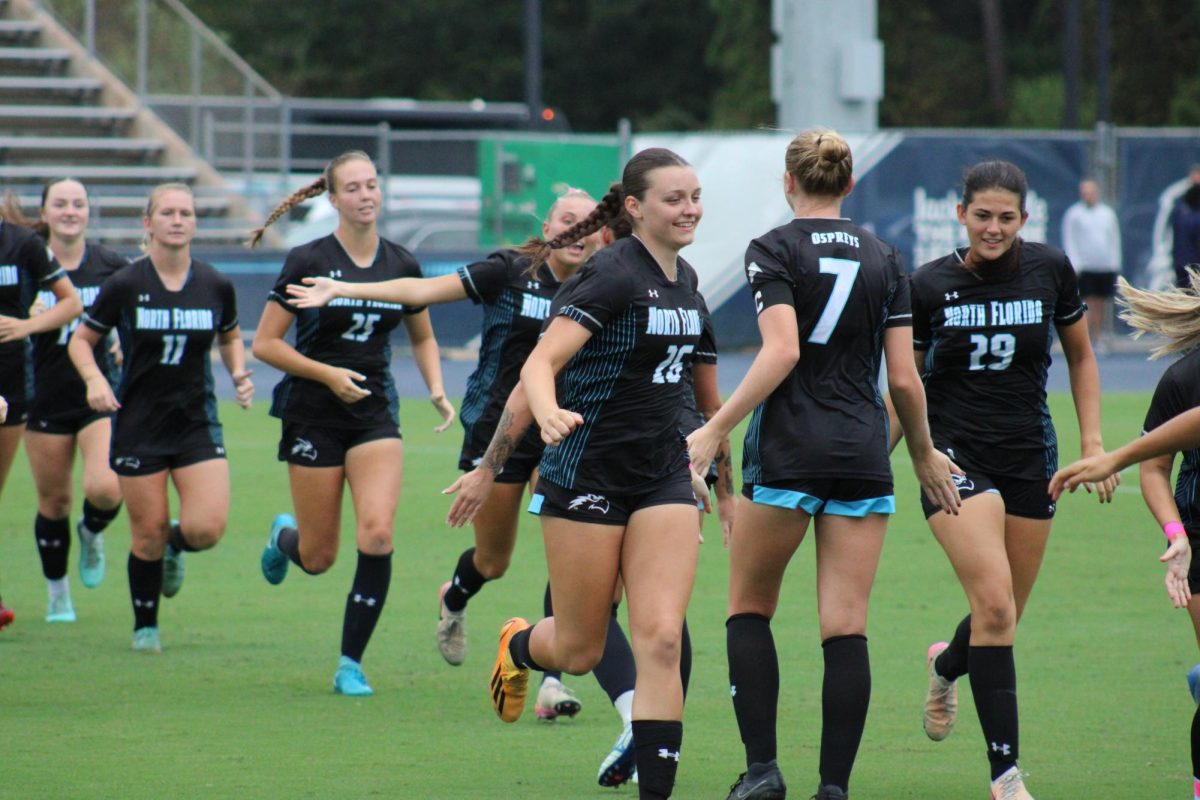While students at other Florida universities pay money to run on a treadmill in a smoggy crowded gym, UNF offers a variety of running options to accommodate its students. UNF is home to numerous trails, roads and a newly built track where students can get their cardio fix, and each location can provide different benefits depending on the styles of running a person prefers. Track, cross-country and street jogging are a few types of running that are the most popular.
“Running is a great sport and requires the smallest amount of equipment,” said track and cross-country head coach Mark VanAlstyne. “Running can be used to grow and can be enjoyed over time.”
5 things to do before going out on a run
1. Stretch before and after the run.
2. Hydrate before and after the run.
3. Invest in a good pair of shoes that match your comfort and support level.
4. Talk to a running coach for tips that might fit your body type and lifestyle.
5. Eat healthy to help nourish and replenish your body. Fruits and lots of carbohydrates are especially helpful in maintaining your body for running exercise.
CROSS COUNTRY
The cross-country style of running is best for runners training for races such as a 5K, which is a little more than three miles. A cross-country run typically consists of a lot of nature trails and rough terrain, which is convenient for UNF students as the campus is on a nature preserve.
This style of running includes multiple groups of people running together, but all members aim to improve their overall time or personal record. Even though time is important to cross-country runners, the race is more about keeping a strong momentum throughout the entire race, VanAlstyne said.
“Cross-country running is more endurance, and track is more speed-related,” he said.
Runners who take on cross-country running should always wear comforting shoes that provide ample support, and they should also wear loose shorts with spandex underneath. Dry-fit clothing is also useful to help retain body heat.
TRACK
Track events only need one runner (just race against a stopwatch). Collegiate track takes a lot of preparation that includes runs such as 100-, 200- or 500- meter runs, VanAlstyne said. Most tracks are now rubberized and called “mondo tracks.” They include six to 10 lanes.
“A rubber track absorbs the shock from the body,” Van Alstyne said. “That is what our new track is made of.”
The new track is not open to UNF students, but there is still a cement track available on campus for any student interested in track running.
No matter where or what type of track you participate in, it’s always about fine tuning your abilities as a runner, assistant coach Julie Stackhouse said.
STREET RUNNING
Street running is for those who don’t usually run on a schedule or everyday basis. These runners normally prefer to run when it’s convenient for them.
At a standpoint, the impact is harder on the runner who chooses the street because there is no cushioning like the rubber of a track or the worn down surface of a trail, VanAlstyne said. However, street running can take place almost anywhere, and the loop of sidewalks around the outside of UNF’s campus is convenient for a lot of students.
Street runners need to be especially careful if they don’t have a regular exercise or running program, VanAlstyne said. They are prone to soreness from the lack of exercise and repetitive running, whereas experienced runners can handle the different surfaces and motions of daily running, VanAlstyne said.
Compiled by Heather Furey.











